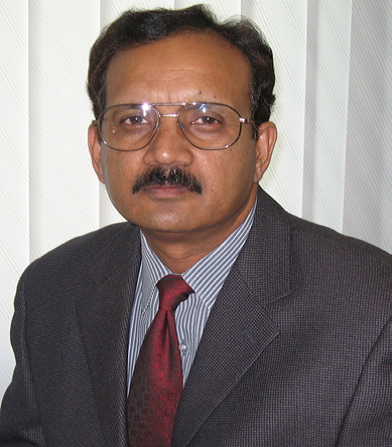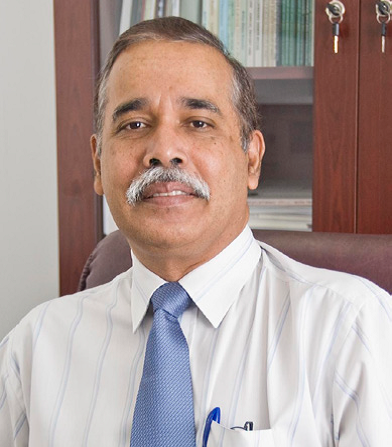The combination of water scarcity, poor soils, hyper-arid environment and projected climate change impact in the Gulf Cooperation Council (GCC) countries (Bahrain, Kuwait, Oman, Qatar, Saudi Arabia and the United Arab Emirates) constrain local agriculture production in meeting the food demand of the current and growing population. This has raised serious concerns about food security in food-insecure but capital-rich countries, and thus food security has emerged as a goal to achieve in most GCC countries. There are various options to achieve food security, including but not limited to local agriculture intensification using technological innovations, food import, and leasing farmland abroad. Currently, over 70 percent of food is imported by GCC countries, the reasons being the large deficit between the current biocapacity (resources generated) and the ecological footprint of consumption (resources used). Such high food import poses a risk to food security when there are political instabilities, wars and famine in countries from where the food is being imported. It is, therefore, important to increase local production to reduce food import dependency and to create a food reserve. In doing so, local agriculture production would be at the forefront. Many view that agriculture in the region comes at some environmental costs as all the countries use much more water in agriculture than what is renewable. All GCC countries are currently at various levels of water stresses. In this workshop, emphasis will be given to various options to increase local agriculture production and to examine their impact on the environment and to discuss alternate sound ways to achieve food security in the GCC countries.
3 DAYS / 12 Workshops
MORE THAN 300 ACADEMIC PAPERS
The GCC countries (we call them Gulf States-GS) are capital-rich nations and have no
foreign exchange limitation for food import. The region has also benefitted from the
recent increase in oil prices and has almost one quarter of the world’s proven natural gas
reserves. Despite the GCC region being capital-rich and despite all government efforts
and support to increase local agriculture production through financial assistance and
subsidies, in 2008 agriculture input to GDP was less than 1 percent in Bahrain, Qatar,
Kuwait, and 2.0 percent, 2.8 percent and 3.9 percent in Oman, UAE and Saudi Arabia,
respectively. The population engaged in agriculture varies e.g., in Qatar, it is 0.8 percent,
Bahrain 1 percent, Kuwait 1.1 percent, UAE 3.2 percent, Saudi Arabia 5.5 percent and
Oman 29.2 percent. In the GS, annual population growth rate of 3.5 percent was reported
in 2008.
The GS are located in a water-scarce region. There is a shortage of freshwater resources,
the groundwater is brackish, and thus most water demand is met through nonconventional water resources, that is from high-cost desalination. Water scarcity, poor
soil resources, low rainfall and high evapotranspiration, climate change impact (rise in
temperature and sea levels, decline in rainfall etc.) can greatly impact agriculture in the
the region. Due to various impacts, the arable land has declined from about 0.2 ha per
capita in 1961 to less than 0.15 ha per capita in 2003. Most of the GS have completed
national soil maps. They identify areas [(Saudi Arabia 13.7 percent); Oman (7.07
percent), Kuwait (35 percent), Abu Dhabi emirate (5.4 percent) and Qatar (3.9 percent)]
as highly to moderately suitable for large-scale irrigation farming. The question is: do the
GS have sufficient water resources to farm these areas?
In 2007, global humanity’s total Ecological Footprint (EF) was 18 billion global ha (gha);
with world population at 6.7 billion people, the average person’s footprint was 2.7 gha,
with 11.9 billion gha biocapacity (1.8 gha per person). Thus, it is apparent that humanity
uses the equivalent of 1.5 planets to provide the resources we use and absorb our waste.
This means it now takes the Earth one year and six months to regenerate what we use in a
year. Today, more than 80 percent of the world’s population lives in countries that use
more resources than what is renewably available within their own boundaries. In the GS,
such figures are astonishing, where the nominal difference between the EF and
biocapacity in gha per person is: Kuwait 5.92; Oman 2.85; Qatar 8.0; Saudi Arabia 4.29;
and UAE 9.83 compared to the world 0.92. There is a net deficit between ecoresources
generated and that consumed and wasted. This difference is compensated through food
import, and in GS the total bill of food import ballooned from $8 billion to $20 billion
from 2002 to 2007.
Given these existing and predicted challenges, the GS are seeking new options for food
security. There are many ways by which they can achieve food security, like
intensification in local food production using high-tech multi-pronged approach
(rationale use of soil resources, modern irrigation systems, protected agriculture, water
conservation, sector wide water reforms, use of alternate water sources); continuing food
import; outsourcing food production to countries which have comparative advantage for
agricultural expansion; leasing farmland abroad, and through creation of a GS-Food
Reserve to be used in case of emergency for at least two years. There are, however,
strengths, weaknesses, opportunities and threats in achieving food security by the above
means.
There are three main driving forces for land lease abroad: 1) to secure food supply by
increasingly food-insecure nations; 2) the surging demand for agrofuels and other
alternate energy sources and; 3) the sharp rise in investment in both the land market and
the soft commodities market. Some view leasing prime land in poor developing countries
as a threat to their food security, as over 35 countries live on food aid policies. Others
view it as an opportunity as the GS have increased access to food resources and “host”
nations benefit from investments in the form of improved agricultural infrastructure and
increased employment opportunities. Acquisition of farmlands in resource-poor countries
may provoke food insecurity. Some are of the view that if land lease is the potential way
to meet food demand, then it is sensible to lease land where there are resource surpluses
(abundant soil and water resources) concentrated in ecological creditor countries, which
currently do not utilize their full biocapacity and where production cost is lower.
However, this is not the present scenario and there have been GS land deals in poor
developing countries.
To avoid provoking food insecurity in poor developing countries and for GS to achieve
food security, another school of thought is: “if GS acquire marginal lands (saline land
resources) which are set aside and currently either not under production or cannot be
brought into production due to poor economic resources of the host countries, and the
investors bring them into production through integrated soil reclamation approach, with
the condition that the prime agricultural lands are left for host country, and this practice
does not upset the local market, farmers rights and food policies, and arrangements are
properly negotiated, local manpower receive training on high-tech in agriculture
production, practices are sustainable, and benefits are shared by the investors and the
host countries, it is only then the investment abroad has a positive case and both the
investors and the host countries are in a win-win situation”. If this scenario is widely
supported and accepted, then there are worldwide opportunities for Gulf States to lease
marginal lands (over 1 billion ha worldwide available) to achieve food security.
The above issues will force policy-makers into rethinking about agriculture in the Gulf
and to seek ways for food security. The workshop welcomes multi-pronged approaches;
these can enhance local agricultural production and help resolve issues related to bridging
the gap between local food production and food import to meet GS food demand. The
workshop expects a range of issues relevant to GCC countries to be debated including but
not confined to the topics given below:
‐ Agricultural policies
‐ Agriculture and water governance
‐ Sustainable agriculture: problems and possibilities
‐ Agriculture and implications on the environment
‐ Climate change impact on agriculture
‐ Prospects of using reclaimed water (treated wastewater) in agriculture
‐ Biosaline agriculture and food security
‐ Socio-economic aspects of agriculture production
‐ Investment in farmland abroad
‐ Ecological footprint and biocapacity
‐ Role of international organizations in agricultural research
‐ Government interventions (subsidies) in agriculture and implications
‐ Food import policies
‐ Creation of Gulf States’ food reserve

